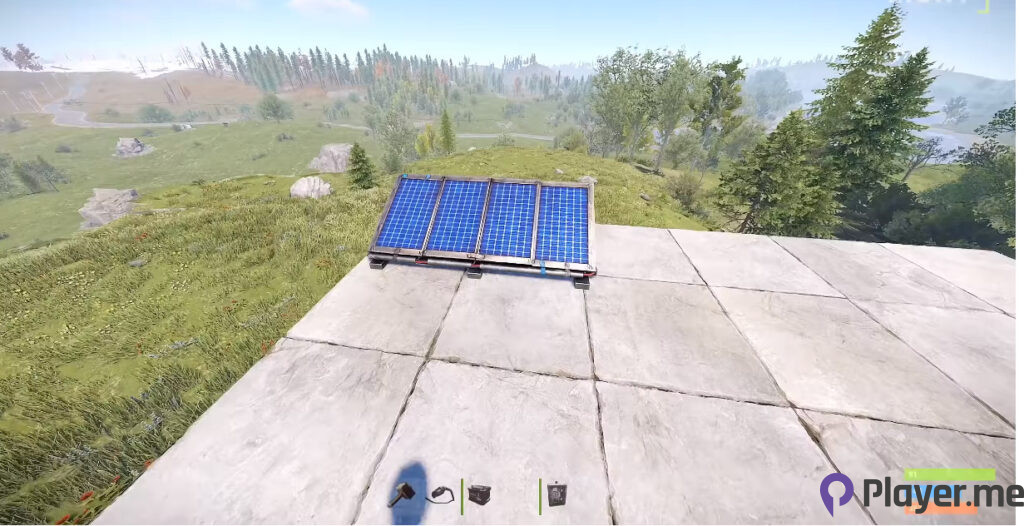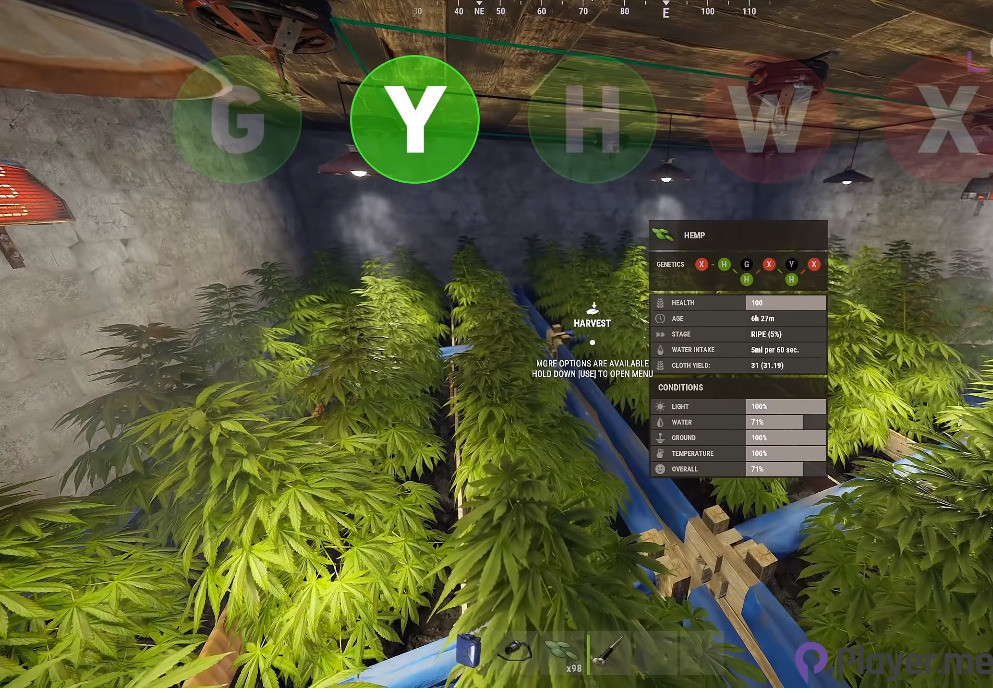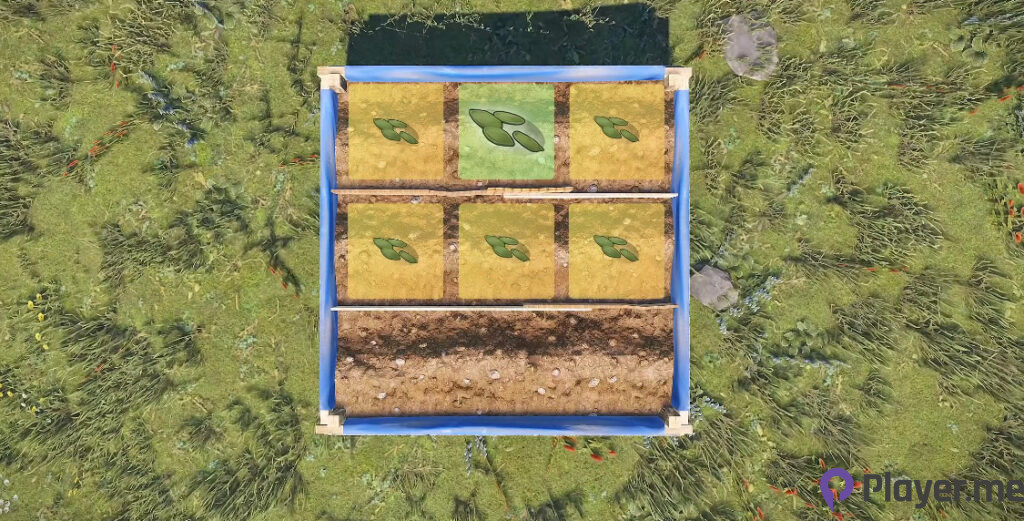
Hello everyone, If you are familiar with the Rust game, then you will also know the complex system of farming within this classic game. There is a high possibility that most players find difficulty understanding this complicated and highly intricate farming system, but today in this guide, we will delve into the intricate process of cultivating crops in Rust and make it easy for you. So, let’s begin.
Seeds: The Foundation of Your Farm
When starting an agricultural venture, you begin with nine distinct seeds, among which are berries, hemp, potatoes, pumpkins, and corn. Obtain these seeds by gathering them from parent plants or extracting them from corresponding foods. The unique aspect is that you can directly plant them in the ground, saving the need for special equipment.
The Conditions of Successful Growth in Rust

Understanding the critical conditions for thriving plant growth is crucial as we explore crop cultivation:
- First and foremost is the light requirement — from sunlight or strategic ceiling lamps — for planter boxes. Adequate light is vital, as it prevents crop deterioration.
- Another vital aspect is water. A regular water supply is imperative unless your planter box possesses an ample reservoir. Watering can be executed through manual pouring using a bucket.
- Ground condition is also pivotal. Planter boxes start at 67%, influenced by biome and type. Fertilisers can be used to enhance ground conditions.
- Temperature, a fundamental element, can significantly impact your crops. Heaters help indoor crops thrive. Specific biomes, such as temperate and desert areas, offer ideal temperature conditions.
- Finally, the overarching health of your plants encompasses light, water, ground, and temperature conditions. Health aligns with the weakest factor, one deficiency affects overall health even if other conditions are optimal.
Also Read: Valkyrie Guide in Apex Legends
Fluid Dynamics and Efficient Water Management
Rust’s fluid mechanics imitate real-world characteristics, with gravity allowing water to flow through hoses without pumps. By placing water storage containers above bases and directing the water downward, electrical pumps can be avoided, especially if the containers are on the ground floor.
Mastering Rust’s Crop Cultivation: A Step-by-Step Guide

1) Tier 1 Equipment
To start farming, you need Tier 1 equipment like a planter box, composter, and reliable light. Choose a small or large planter based on space and preference, with the large one unlocked at the level 1 workbench for 155 scraps.
2) Tier 2 Equipment
Tier 2 offers a more comfortable farming experience. It provides additional tools and a larger planter box for more efficient farming. Notably, a more capacious planter box capable of housing nine seeds becomes available, requiring a level 1 workbench blueprint unlock. It is suitable for expanding agricultural activities.
3) Tier 3 Equipment
In Tier 3, water pumps and purifiers are introduced to the farm, improving water collection and crop hydration. This leads to higher farming efficiency and better crop yields.
4) Unlocking Crucial Resources
Understanding the technological tree is crucial. Unlocking the level 1 workbench provides buckets, water containers, and piping for water distribution. This ensures a steady supply of water. Exploring the power generation path also reveals the battery and solar panel.
5) Hydration and Nutrient Management
The sustenance of your crops relies on consistent hydration, accomplished through a bucket to collect water from nearby sources. A simple left-click action applies water to your crops, manifesting in a visible change in soil saturation. Maintaining a watchful eye on your planter box’s water levels is crucial, a surplus ensures continuous hydration for robust growth.
6) Fortifying Soil Health with Fertilisers
Using a composter and fertilisers can improve harvests by converting food into valuable fertilisers. Horse dung is the best choice, yielding 10 units per unit. Fish is an alternative, producing 0.8 units per unit. Adding fertiliser to planter boxes boosts crop health and growth. A steady supply of fertilisers is crucial for optimal development.
Efficient Water and Lighting Management: Tier 2 Farming Techniques

Harnessing Solar Energy for Lighting
To optimise lighting conditions, the use of solar energy presents a valuable technique. This can be achieved by positioning planter boxes under direct sunlight or incorporating ceiling lights above them. The installation of a single ceiling light can effectively illuminate up to four planter boxes, maintaining an ideal 100% light environment. Powering these lights requires electricity, and a feasible approach involves crafting a solar panel, a compact battery, and a switch.
Efficient Water Management and Tier 3 Advancements

1) Water Barrel Setup:
Initiate your water management strategy by setting up a water barrel and filling it with fresh water. Water can be efficiently transferred from buckets, bottles, or jugs, with a preference for the latter due to its spill-free design and higher capacity (5 Litres).
2) Harnessing Passive Water Income:
To ensure a steady water supply, the installation of a water catcher on your roof proves invaluable, yielding a consistent flow of water ranging from 3 to 23 ml per minute. Connecting the water catcher to a barrel via a hose facilitates continuous water storage, and combining multiple catchers in series enhances water collection efficiency.
3) Automated Water Distribution:
Streamline your watering process by incorporating automation. Mount a fluid pump equipped with a switch on an accessible wall, strategically positioning ceiling-mounted sprinklers above planter boxes. Each sprinkler can serve up to six boxes, promoting effective and efficient irrigation.
4) Navigating Water Sources:
Selecting the appropriate water source becomes pivotal in Tier 3. Ocean water necessitates the use of a purifier, while a direct connection between the pump and water barrel is recommended for a continuous supply when utilising lake or river water.
5) Powering the System:
For optimal performance of the water pump, the addition of a second solar panel and battery is advised. While a small battery’s 10-watt power output may be insufficient, integrating an additional 10-watt through a second battery ensures smooth operation. An alternative approach involves using a medium battery, although opting for a new solar panel and battery combination is a simpler solution.
Also Read: Rust 2023 Gunplay Update: Exploring New Recoil Patterns and Mechanics
Rust Farming Genetic Potential

Strategic Genetic Selection and Crossbreeding
To achieve excellence in farming, the strategic selection of genetics plays a pivotal role. The process involves collecting and planting diverse seeds, systematically eliminating undesirable traits while aiming for combinations that promise high yields and rapid growth. In cases where seeds exhibit unfavourable traits, crossbreeding presents a viable solution.
By introducing neighbouring seeds with desired traits, the negative attributes can be gradually replaced. It’s worth noting that green traits are easier to substitute than red traits, which demand two positive attributes. Achieving precision in aligning the negative slot with two identical green traits is crucial.

Optimising Success: Cloning and Efficient Layout
Once the desired genetic combination is achieved, maximising its potential can be realised through cloning. By interacting with the plant and utilising the ‘E’ key during crossbreeding, specific traits can be enhanced. Efficient layout design is another key aspect of successful farming. Planting seeds in the corners of planters proves to be an optimal strategy, preventing unintended crossbreeding while enabling effective cultivation.
Profit Generation and Yield Utilisation
The culmination of these efforts leads to efficient profit generation. By selling excess yield, farmers can tap into a lucrative opportunity, particularly through engagement with the bandit camp. Trading surplus hemp or corn yields various benefits. Trading smaller quantities results in scrap, while larger amounts establish a consistent passive income stream, offering a tangible reward for the meticulous genetic selection and cultivation strategies employed.
Also Read: Loba Guide in Apex Legends
Conclusion
In conclusion, farming holds the potential to transform your survival experience. It can create a sustainable income stream customised to match your play style. Thank you, fellow Rust adventurers, for accompanying us on this farming odyssey. Keep visiting Player.me for more Rust-related content and updates.
Frequently Asked Questions
How Long Does It Take for Crops to Grow Rust in the Game?
In Rust, all planted plants and berries go through a growth process that typically spans a few hours before yielding a substantial amount of resources. This growth involves distinct age stages as the plants mature.
What Does the H Gene Mean in Rust Farming?
H stands for Increased Hardiness. This refers to the plant’s toughness. The tougher the plant, the more you benefit when consuming it, contributing to both health and hunger.
When to Harvest in Rust for the Best Resources?
Harvest at the Ripe stage for maximum yields, regardless of the percentage.





